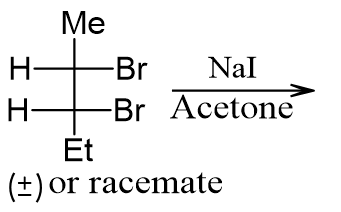Maths-
General
Easy
Question
The area of the region bounded by the curve y=f(x), x-axis and the ordinates x=a, x=b (a>b) is

We have to find the area bounded by a curve y = f(x), x- axis and points x = 2 and x = 3.
The correct answer is: 
To find the area, we will integrate the function in the limits given.
The curve is a function of x. So, we have to integrate the the given function in terms of dx.
The limits on the function are x = a and x = b
So, we can write the area of the bounded region as follows:
Area =
This is the required value.
.
For such questions, we should be careful about the limits on variable.
Related Questions to study
Maths-
Maths-General
Maths-
Maths-General
Maths-
The number of solutions of the equation
sin 2x = [1 + sin 2x] + [1 cos 2x] in  where [.] is the greatest
where [.] is the greatest
integer function is
The number of solutions of the equation
sin 2x = [1 + sin 2x] + [1 cos 2x] in  where [.] is the greatest
where [.] is the greatest
integer function is
Maths-General
Maths-
If  , then
, then
If  , then
, then
Maths-General
Maths-
Maths-General
Maths-
Number of solutions of the equation Sin x + sin2x + sin3 x + sin4x + ……. Π= 2 where x Π[0,4Π], is
Number of solutions of the equation Sin x + sin2x + sin3 x + sin4x + ……. Π= 2 where x Π[0,4Π], is
Maths-General
Maths-
The number of real solutions of the equation  is
is
The number of real solutions of the equation  is
is
Maths-General
Maths-
For which of the following values of m is the area of the region bounded by the curve y =x - and the line y = mx equal to 9/2…
and the line y = mx equal to 9/2…
For which of the following values of m is the area of the region bounded by the curve y =x - and the line y = mx equal to 9/2…
and the line y = mx equal to 9/2…
Maths-General
Maths-
The area of the region bounded by y = and y =-
and y =- +1 is…
+1 is…
The area of the region bounded by y = and y =-
and y =- +1 is…
+1 is…
Maths-General
Chemistry-
Which of the following is the correct order of stability of the following compound?
I) 
II) 
III) 
Which of the following is the correct order of stability of the following compound?
I) 
II) 
III) 
Chemistry-General
Chemistry-
Which of the following reactions would give  -alkene?
-alkene?
I) 
II) 
III) 
IV) 
Which of the following reactions would give  -alkene?
-alkene?
I) 
II) 
III) 
IV) 
Chemistry-General
Chemistry-
 (A) (B)& (C) are:
(A) (B)& (C) are:
 (A) (B)& (C) are:
(A) (B)& (C) are:
Chemistry-General
Maths-
If the sides of a triangle ABC are a, b and c such that 2b = a + c, then exhaustive range of
then exhaustive range of  is
is
If the sides of a triangle ABC are a, b and c such that 2b = a + c, then exhaustive range of
then exhaustive range of  is
is
Maths-General
Chemistry-
 A, B, and C are:
A, B, and C are:
I) 
II) 
III) 
 A, B, and C are:
A, B, and C are:
I) 
II) 
III) 
Chemistry-General
Chemistry-
The decreasing order of nucleophilicities in  (dimethylsulphoxide) is:
(dimethylsulphoxide) is:
The decreasing order of nucleophilicities in  (dimethylsulphoxide) is:
(dimethylsulphoxide) is:
Chemistry-General





